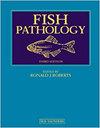一种单系动物<i> girellaneobenenenia </i>
IF 0.2
4区 农林科学
Q4 FISHERIES
引用次数: 0
摘要
在这项研究中,我们评估了不同的水温对新贝尼德尼亚(neobenenenia girellae)嗜酸体游泳能力的影响。此外,我们还研究了它们在25°C孵育后对杜氏小孢子虫的传染性的时间变化。在充满海水的细胞培养瓶中,实验结束6 h时,大部分藻体呈脆性,主要匍匐在底部。在12孔细胞培养板的含海水井中,约有9%的肿瘤细胞不游动,被困在空气-水表面界面中。然而,当在油井的海水表面放置聚乙烯片时,这些影响得到了缓解。采用该方法进行实验时,在30°C、25°C和20°C的条件下,在孵化后60、72和108 h仍保持活性,仍在游动。随着水温的升高,藻体游泳能力的停留时间逐渐缩短。孵卵后24 ~ 25.5 h以上,嗜酸病毒的感染性降低。暴露于杜梅里氏梭菌5 d后,在孵化后36 ~ 37.5 h,与刚孵化的相比,使用oncomiracidia的吉瑞氏梭菌的附着数量显著减少,体长显著缩短。本文章由计算机程序翻译,如有差异,请以英文原文为准。
Temporal Change in the Swimming Ability and Infectivity of the Oncomiracidium of a Monogenean <i>Neobenedenia girellae</i>
In this study, we assessed the influence of different water temperatures on the swimming ability of the oncomiracidium of Neobenedenia girellae. In addition, we investigated the temporal change in their infectivity to Seriola dumerili after hatching at 25°C. Most oncomiracidia in the cell culture flask filled with seawater deciliated and predominantly crept on the bottom by the end of 6 h experiment. Approximately 9% of the oncomiracidia in seawater-containing wells of a 12-well cell culture plate were non-swimming and became trapped in the air-water surface interface. However, these effects were mitigated when a polyethylene sheet was placed on the seawater surface in the wells. When conducting the experiment using this method, the oncomiracidia remained active and were still swimming at 60, 72, and 108 h after hatching at 30°C, 25°C, and 20°C, respectively. The retention time of the oncomiracidia's swimming ability decreased as the water temperature increased. The oncomiracidial infectivity was reduced after 24–25.5 h or more after hatching. At 5 days after the exposure to S. dumerili, the number of attached N. girellae was significantly lower, and their body length was significantly shorter when using oncomiracidia that were 36–37.5 h after hatching compared to freshly hatched ones.
求助全文
通过发布文献求助,成功后即可免费获取论文全文。
去求助
来源期刊

Fish Pathology
农林科学-兽医学
CiteScore
1.40
自引率
16.70%
发文量
13
审稿时长
6 months
期刊介绍:
Information not localized
 求助内容:
求助内容: 应助结果提醒方式:
应助结果提醒方式:


